To tailor your vintage houndstooth blazer, start by checking the fit. Confirm shoulder pads rest comfortably on your shoulders and measure your bust for a snug fit around 40 inches. Tweak the waist to about 38 inches for a flattering silhouette. If sleeve lengths are an issue, aim for them to end just above your wrist. For alterations, consider chain stitching to maintain fabric integrity and mark pocket placements with chalk for symmetry. As you personalize, think about incorporating unique touches like leather tabs or silk linings. Stick with eco-friendly materials to enhance sustainability, and there's much more to explore!
Assessing the Blazer Fit
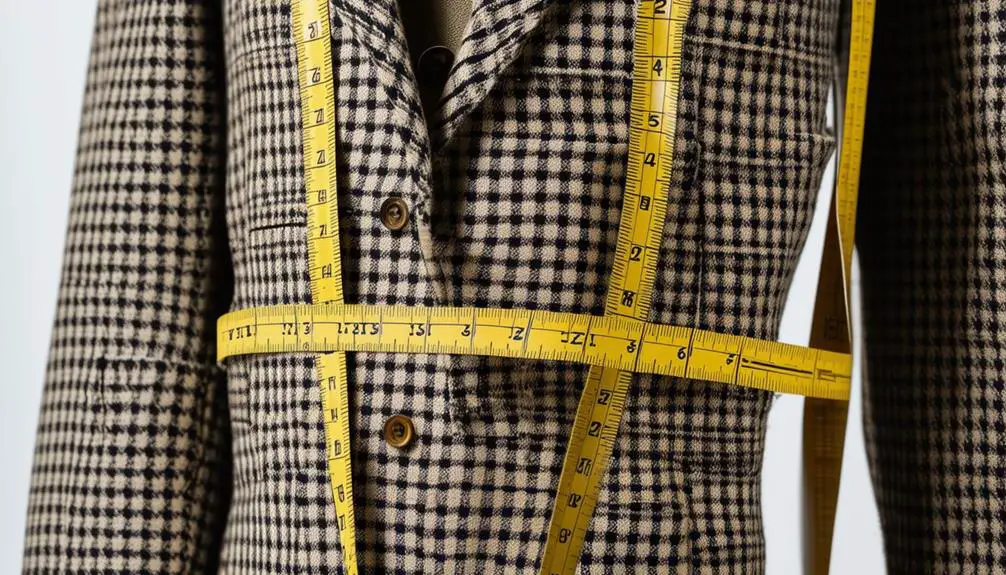
When it comes to evaluating the fit of your vintage houndstooth blazer, start by putting it on and checking how it feels. Notice how the shoulder pads sit; they should rest comfortably without sagging or pinching, ideally aligning with your shoulder bone. This is essential for achieving that chic, vintage tailored look.
To further enhance your understanding of vintage clothing, consider looking into common vintage labels that can help you identify the craftsmanship and era of your blazer.
Next, assess the bust measurement. It should feel snug but not tight, allowing for easy movement without straining the fabric—aim for about 40 inches.
Moving down to the waist, the blazer should taper closely, around 38 inches, offering a tailored fit without discomfort or pulling.
Take a moment to check the length of the blazer. It should ideally hit around your hipbone, with a total length around 29 inches, providing a balanced silhouette.
Finally, pay attention to the sleeve length. They should end just above your wrist bone, allowing a hint of your shirt cuffs to peek through. If needed, you can shorten the sleeves by about 3/4 inch for that perfect fit.
Techniques for Alterations
After you've assessed the fit of your vintage houndstooth blazer, it's time to contemplate how to make those adjustments. Start by examining the construction of the garment to pinpoint areas needing alteration, like taking in the side seams or adjusting sleeve length.
For a professional finish, utilize chain stitching when altering seams; this technique guarantees durability while preserving the fabric's integrity.
If you're replacing or repositioning pockets, mark their new placement with chalk lines and check alignment using a mirror for symmetry on both sides of the blazer. This attention to detail can elevate the overall look.
When shortening the sleeves, consider using non-functioning buttons. This approach simplifies your adjustments and avoids complications with buttonhole placement.
If your alterations involve complex features like shoulder adjustments, consult a skilled tailor. Their expertise can help you achieve the best fit and prevent structural issues that could arise from DIY attempts.
Choosing the Right Materials
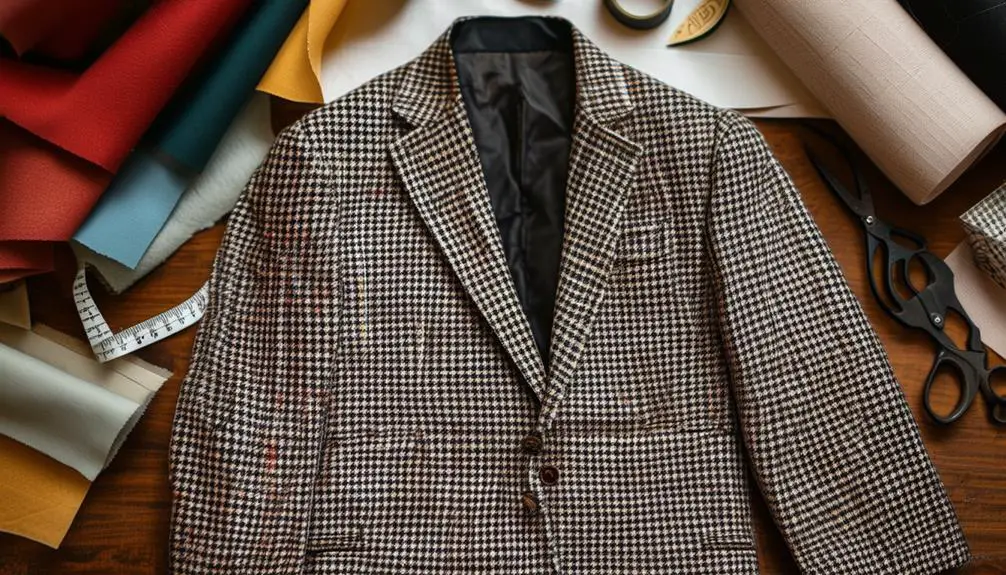
How can you assure your vintage houndstooth blazer retains its charm while fitting perfectly? The answer lies in choosing the right materials. Start with silk charmeuse for the lining; its luxurious feel complements the original fabric and enhances the blazer's vintage quality.
When adding elements like shoulder pads or pocket linings, select fabrics that match the weight and texture of the original wool. This attention to detail guarantees a cohesive look that honors the garment's heritage.
Next, use high-quality thread that matches the blazer's color for sewing seams and reattaching buttons. This not only boosts durability but also maintains a seamless appearance.
Consider repurposing remnants from disassembled components for interior pockets to promote sustainability while preserving that vintage aesthetic you love.
Before incorporating any new materials, always pre-wash or steam them. This vital step prevents shrinkage after alterations and assures they blend well with the existing fabric.
Finishing Touches and Care
The charm of a vintage houndstooth blazer isn't just in its classic pattern; it's also in the thoughtful finishing touches that elevate its uniqueness. Incorporate fun elements like a leather hanging tab or an embroidered undercollar to make your blazer truly one-of-a-kind. These details not only enhance its aesthetic but also reflect your personal style.
When it comes to construction, use hand sewing techniques for precision, especially when attaching sleeve button plackets and front facings. This meticulous approach guarantees a polished look that machine sewing often can't achieve.
If the lining shows signs of wear, consider replacing it with luxurious silk charmeuse to elevate the interior and complement the outer fabric beautifully.
Caring for your blazer is essential. Follow fabric-specific cleaning guidelines to maintain its vintage quality and appearance. Regularly check for natural signs of wear and address any minor repairs promptly.
This proactive approach will prolong the life of your tailored piece, keeping it looking fresh and stylish for years to come. With these finishing touches and care tips, your vintage houndstooth blazer will remain a standout piece in your wardrobe.
Inspiring Sustainable Fashion
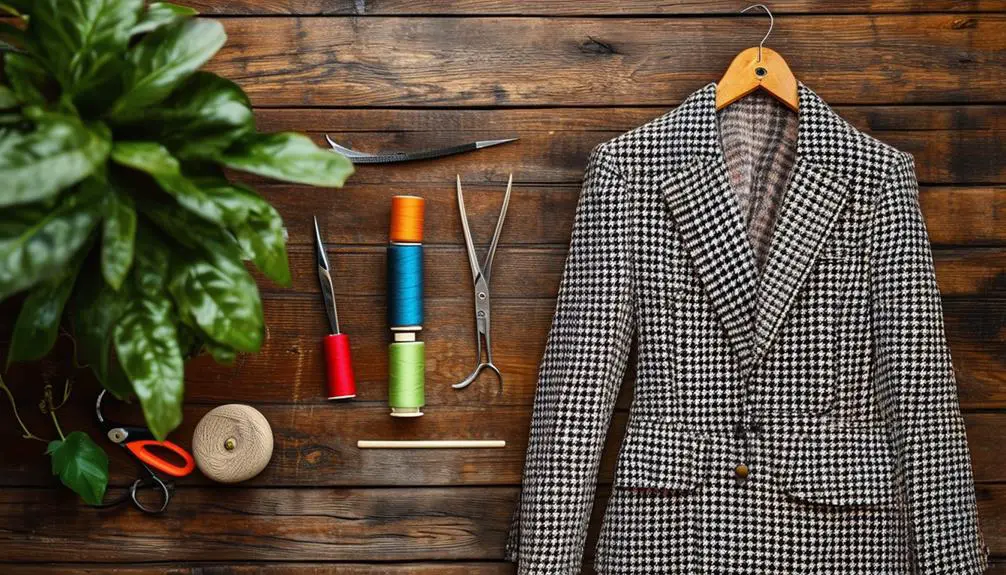
Revamping a vintage houndstooth blazer not only showcases your personal style but also aligns perfectly with the principles of sustainable fashion. By breathing new life into old clothing, you actively reduce waste and promote the reuse of materials.
Understanding the importance of vintage tag identification can further enhance your appreciation for the garment's history and provenance. It's a win-win situation where you not only save money—altering a thrifted blazer can cost around $10—but also make a statement about mindful consumerism.
Engaging in garment reconstruction allows you to express creativity and individuality. As you transform your blazer, you might inspire others in your community to initiate similar projects, creating a ripple effect of sustainability.
Working with skilled tailors or attending workshops can sharpen your sewing techniques, making the process even more enjoyable. Consider eco-friendly materials for linings or other alterations, which further emphasizes your commitment to sustainable practices.
Every stitch you take not only enhances your wardrobe but also contributes to a larger movement that values ethical fashion. So go ahead, embrace the art of tailoring, and let your vintage houndstooth blazer be a beacon of inspiration for those around you, proving that style and sustainability can go hand in hand.
Frequently Asked Questions
Can Readymade Blazer Be Altered?
Yes, you can alter a readymade blazer! With adjustments like taking in seams or shortening sleeves, you'll achieve a better fit. Just guarantee it's slightly oversized for more flexibility during the alteration process.
Is It Hard to Tailor a Blazer?
Tailoring a blazer can be tricky. You'll face challenges, especially with complex areas like shoulders and armholes. Limited fabric allowance may restrict alterations, so understanding construction is key to achieving that perfect fit.
Can You Alter a Blazer to Make It Smaller?
Yes, you can alter a blazer to make it smaller! By taking in the side seams, back seams, and possibly adjusting the shoulders, you'll achieve a better fit while preserving its overall structure and style.
How Do You Pair a Houndstooth Blazer?
You can pair a houndstooth blazer with a solid turtleneck or fitted dress. Combine it with tailored trousers or dark jeans, and accessorize with neutral tones to create an elegant, balanced look that highlights the pattern.
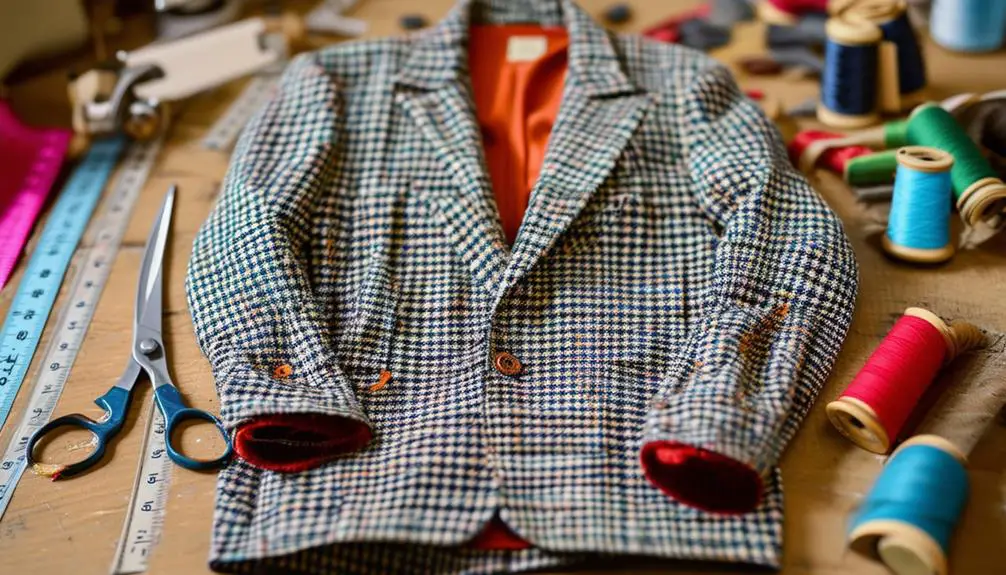

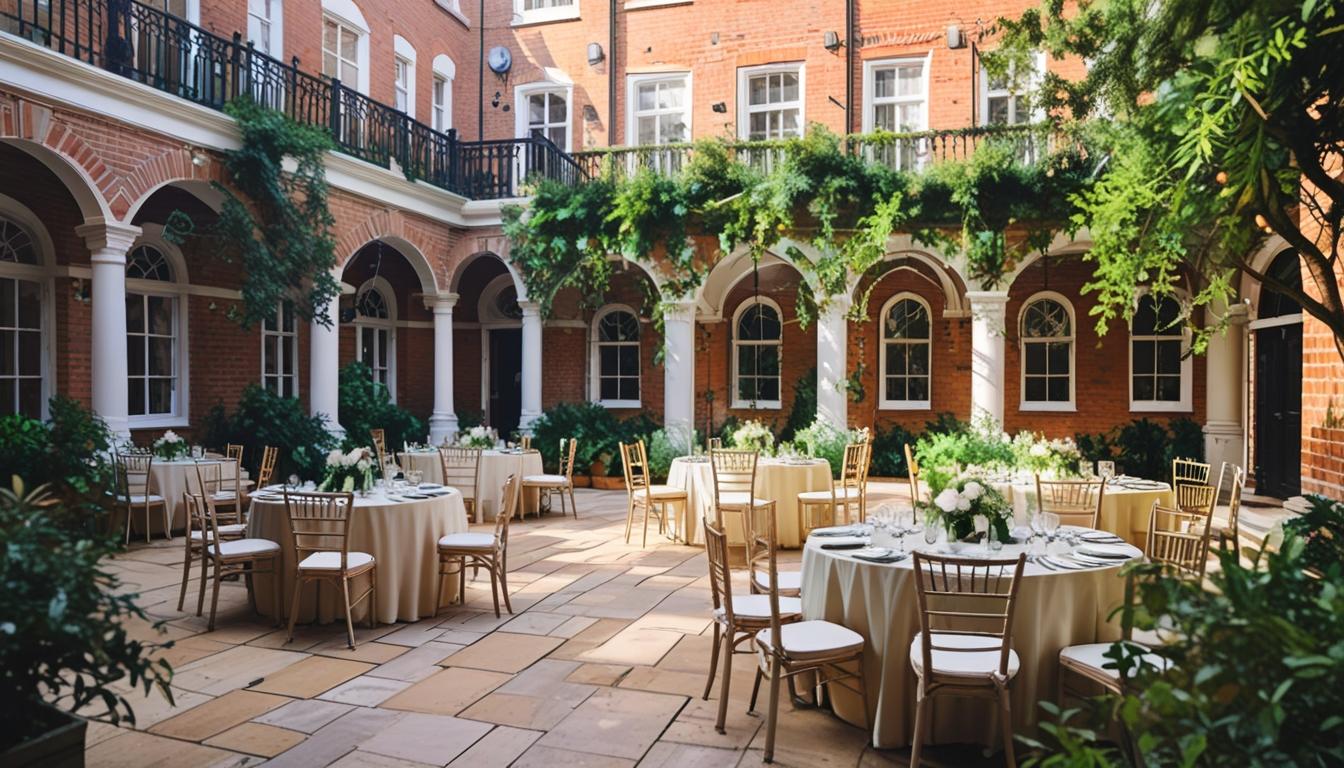


Can you be more specific about the content of your article? After reading it, I still have some doubts. Hope you can help me.